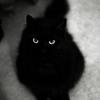Fast telephoto lenses on the Leica.
-
Recently Browsing 0 members
- No registered users viewing this page.
-
Similar Content
-
- 30 replies
- 2,036 views
-
- 4 replies
- 218 views
-
Thorium lenses 1 2
By Tragg,
- 27 replies
- 5,675 views
-
- 5 replies
- 151 views
-
- 4 replies
- 232 views
-


.thumb.jpg.f9d155d7f5297e1431b1f6e1d76f5df6.jpg)

Recommended Posts
Join the conversation
You can post now and register later. If you have an account, sign in now to post with your account.
Note: Your post will require moderator approval before it will be visible.